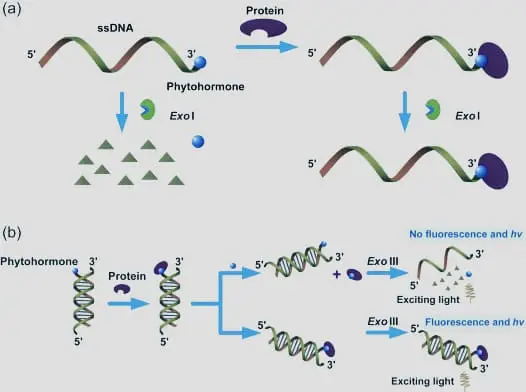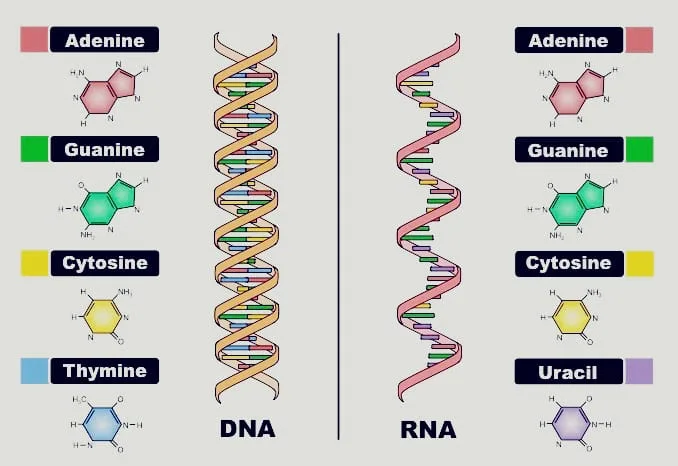Structure and Components of Nucleic Acids
Nucleic acids are long-chain polymeric polymers with nucleotides serving as the monomer (the repeating unit); they are frequently referred to as polynucleotides.
- Nucleotides are the fundamental pieces of nucleic acids. A phosphate unit, a sugar, and a nitrogen base make up each nucleotide.
- Deoxyribonucleic acid and ribonucleic acid are the two types of nucleic acid.
- Adenine, thymine, guanine, and cytosine are among the DNA nucleotide bases. RNA uses the same set of bases as DNA, with the exception that unit cells are used in place of thymine.

- Nucleotides bind to one another to create strands or other structures.
- Nucleotides are arranged and twisted into a double strand known as a double helix in the DNA molecule.
- The “master code” for putting together proteins and other nucleic acids is the arrangement of various nucleotides along the DNA double helix.
Deoxyribose Nucleic Acid (DNA)
- Pentose sugar, phosphoric acid, and a few nitrogen-containing cyclic bases make up DNA chemically.
- DNA molecules include a sugar component called D-2-deoxyribose.
- Adenine, guanine, cytosine, and thymine are the cyclic bases that include nitrogen (T).
- Information storage from one generation to the next is significantly aided by these bases and how they are arranged in DNA molecules.
- The two strands of DNA’s double-strand helix are complementary to one another.

Ribose Nucleic Acids (RNA)
- The RNA molecule consists of phosphoric acid, a pentose sugar, and cyclic bases containing nitrogen.
- RNA has β-D-ribose in it as the sugar moiety.
- The heterocyclic bases present in RNA are adenine (A), guanine (G), cytosine(C), and uracil (U).
- In RNA, the fourth base is different from that of DNA.
- The RNA generally consists of a single strand, which sometimes folds back, resulting in a double helix structure.
- There are three types of RNA molecules, each having a specific function:
- Messenger RNA (m-RNA)
- Ribosomal RNA (r-RNA)
- Transfer RNA (t-RNA)
Purposes of Nucleic Acid
- Parents pass inherent traits to their children through nucleic acids.
- They produce the proteins that make up our bodies, and forensic professionals employ DNA fingerprinting to establish paternity.
- Criminal identification is another application for it.
- Additionally, it has been crucial in research on genetics and biological evolution.
Also Read About:

